 April 2024
“Just living is not enough. One must have sunshine, freedom and a little flower.” 🌼🌞
~ Hans Christian Andersen
 📷: Celeste Fisher-Dale, Sakatah Lake State Park
Much needed April showers are nudging shy wildflowers above ground at some of Minnesota's state parks. Spring ephemerals (plants with a very short life cycle), have begun smiling up at the sun and visitors alike as they reach through awakening prairie grasses and leaf litter. Get out and enjoy these incredible spring blooms while they're here—they won't stay long.
The beautiful image above is of Sharp-Lobed Hepatica (Anemone acutiloba), photographed recently at Sakatah Lake State Park by Celeste Fisher-Dale. If you look closely, it's almost as if the flower's stem has goosebumps. Similar to a winter coat, Hepatica has an adaption of fuzzy 'wool' that wraps around the stem of the plant, protecting it from the wind and cold. Learn more about early spring wildflowers below!
 American Pasqueflower (Anemone patens)
Blooms March to May.
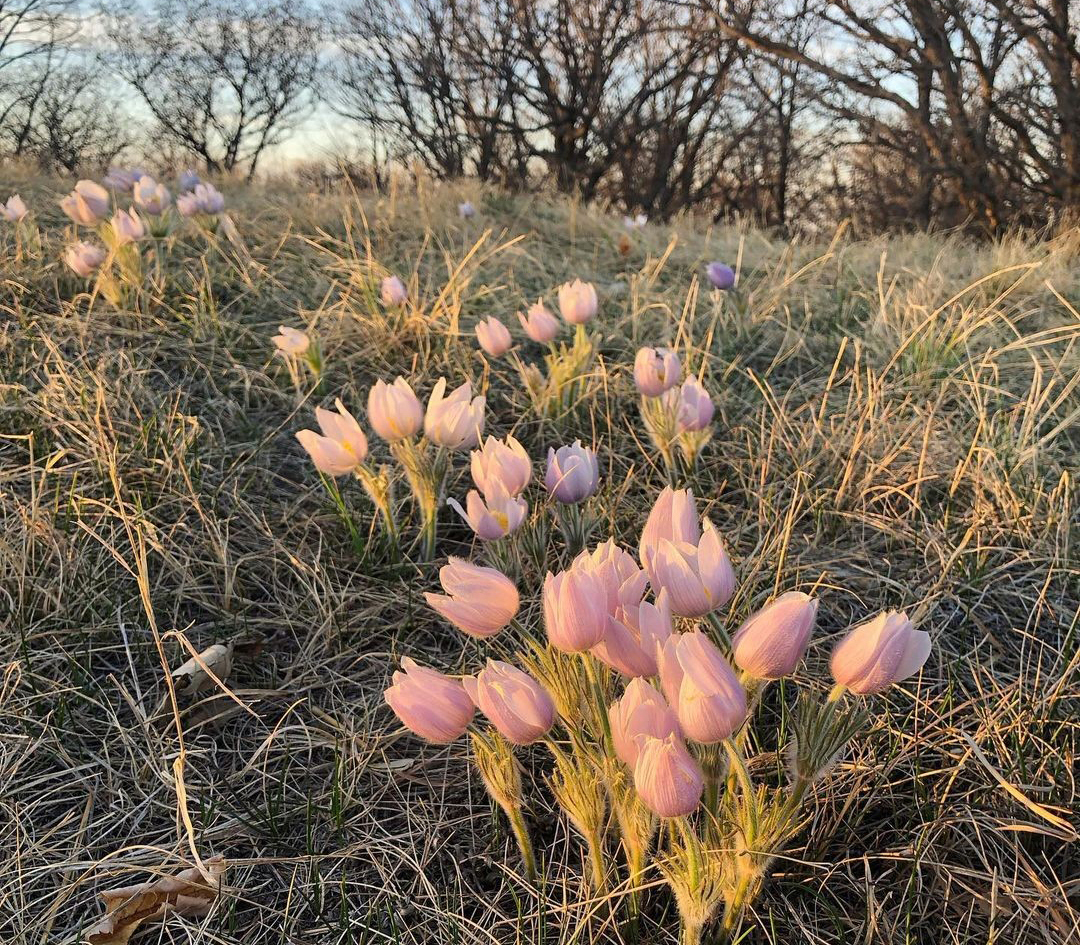 📷: Megan Lisburg, Glendalough State Park
Despite their delicate appearance, American Pasqueflowers are often one of the first wildflowers to pop up in prairies shortly after snowmelt.
A good place to look for these fuzzy flowers is on south-facing prairie slopes in dry sandy soil. Glendalough, Glacial Lakes, and Camden state parks are all excellent choices when searching for these adorable spring beauties.
Single flowers have five to seven (typically six) blue-violet to white petals. They can be found alone, but are often in clusters of gorgeous, yellow-centered spring blooms.
On a less scientific note—because Pasqueflower petals close at night, the flowers have been a favorite in faerie folklore. Don’t you think these fuzzy flowers would be the perfect place for fair folk to take shelter for the night? 🧚
Virginia Bluebells (Mertensia virginica)
Blooms April to June.
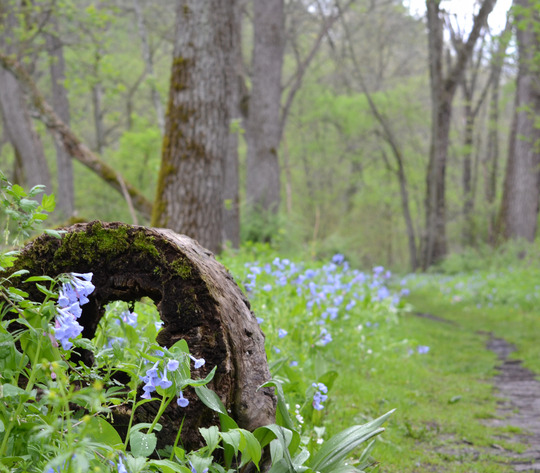 📷: DNR staff, Carley State Park
“When bluebells ring their bells, the winter gloom dispels.” —unknown
From April through June, the Wildflower Trail at Carley State Park transports visitors into a magical world of blue constellations. Virginia Bluebells are often one of the first wildflowers to bloom and provide early pollinators with pollen and nectar.
Hike along the Wildflower Trail that follows the Whitewater River and take in the grand old white pines. Once you reach the north branch of the Whitewater River, peak into the water and see if you can spot a brown trout! The Wildflower Trail is also a part of the Hiking Club—so don’t forget your booklet when you visit.
Dutchman’s Breeches (Dicentra cucullaria)
Blooms April to May.
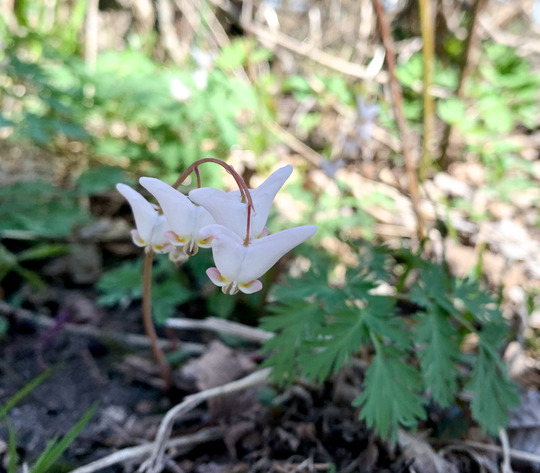 📷: Kara Karels, Sakatah Lake State Park
I see London. I see France. I see...Holland and mini underpants? As we begin to re-open windows and toy with the idea of hanging laundry outside, Mother Nature is a step ahead of us.
Dutchman's Breeches is a fascinating species—its name derived from the unusual appearance of the delicate blooms. Resembling miniature white knee breeches suspended on a clothes line, each flower stalk hosts a cluster of four to 10 V-shaped white flowers.
Emerging from March to May, these delicate blooms signal the arrival of warmer days and vibrant colors. Their fleeting nature also serves as a reminder to admire them in their natural habitat, as they wilt immediately upon picking. Thank you for only taking photos, not flowers, in Minnesota state parks!
These unique blooms grace the landscapes of state parks including Nerstrand Big Woods, Sakatah Lake, Interstate, and various other parklands, adding a touch of charm and whimsy to the season's awakening.
White Trout Lily (Erythronium albidum)
Blooms April to May.
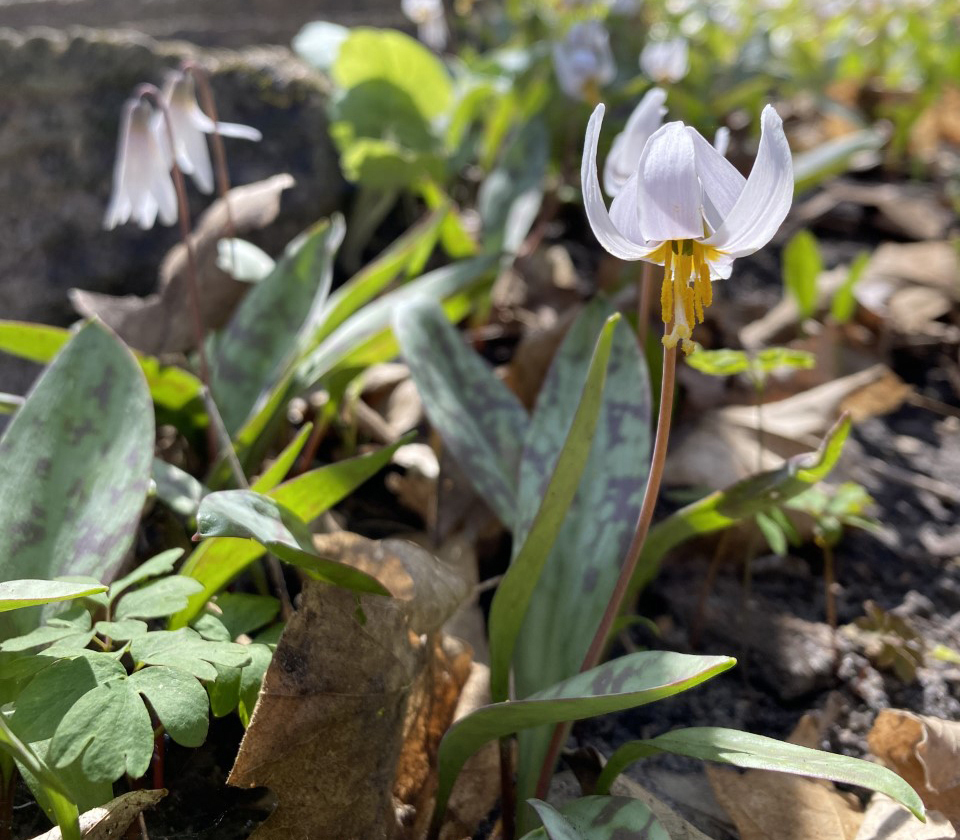 📷: Kelsey Moe, Minneopa State Park
The White Trout Lily (Erythronium albidum) is very similar to the state and federally endangered Dwarf Trout Lily (Erythronium propullans) except it's not.... well, you know, dwarf-sized.
White Trout Lily is a native perennial that grows in deciduous hardwood forests with plenty of shade, as well as on riverbanks and floodplains. The flowers bloom from April to May and are distinguished by a single nodding purple-tinged white flower suspended from the end of a naked stalk.
Their common name refers to the pattern on their leaves, which resembles trout's speckled skin: shiny blue-green with irregular, mottled and purplish brown spots. One of the most captivating features of this flower is its ability to close at night and reopen during the day, known as nastic reactions in biology.
These slow growing colonial species can be magical to see when you happen upon a meadow of them—appearing like river trout swimming down the hillsides they grow on. Look for these wildflowers at Minneopa, Beaver Creek Valley, or Rice Lake state parks.
Prairie Smoke (Geum triflorum)
Blooms April to June.
 📷: Marilynn Miller, Blue Mounds State Park
"A rose by any other name would smell as sweet..." 🌹
This is great news for a member of the rose family nicknamed 'Old Man's Beard.' The native Minnesota wildflower, Prairie Smoke grows vibrant pink stems and fuzzy, bulb-like flowers in small patches.
Commonly found in open, sunny meadows, Prairie Smoke flowers open after pollination, releasing long feathery plumes. When blooming together, the wispy plumes can look like smoke blowing in the wind—hence the common name of Prairie Smoke.
Want to see this spectacular flower? They bloom between April and June and have a wide distribution across Minnesota. Visit a park in the prairie region of western or southern Minnesota. Big Stone Lake, Blue Mounds, or Camden state parks are all great options for viewing Prairie Smoke.
 Reminder from the Past...
 📷: DNR staff, Itasca State Park
During a recent archiving effort at Itasca State Park, a letter was found dating back to 1924. Written by the state forester, the letter emphasizing the importance of not picking wildflowers.
The forester describes visitors being "naturally tempted to gather large bouquets or even armfuls of these beautiful flowers"—specifically referring to Minnesota's state flower, the Lady's Slipper orchid.
"Surely these beautiful flowers growing in Itasca State Park will give more pleasure to more people than if pulled up and placed in a vase where they soon wilt."
One hundred years later, we echo this same sentiment. We know the blooms of spring are stunning, but please don't pick the wildflowers. Thank you for helping preserve and protect Minnesota's native plant communities in state parks!!

 Wildflower Programs at State Parks
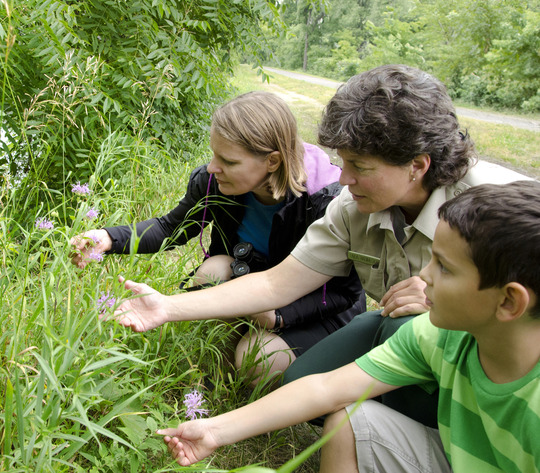 📷: DNR staff, Gateway State Trail
Can't get enough wildflowers? Join us for a flower-focused event at a state park near you! Options include wildflower walks (and hikes) with skilled naturalists where you'll learn to identify blooms, Carley State Park's Bluebell Festival, or, you could even skip the store-bought bouquet this Mother's Day (May 12) and treat your mom to a wildflower walk instead.
Browse our events calendar to view all options and get details.
The Smell of Spring
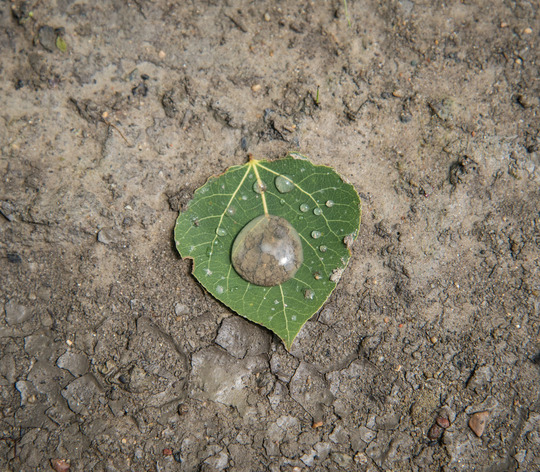 📷: DNR staff, Sand Dunes State Forest
April showers bring not only May flowers, but also produce petrichor. What is petrichor? It’s the unique and fresh smell associated with rain! Multiple things combine to create petrichor: geosmin, plant oil secretion, and even lightning can play a role in that earthy fragrance we smell after a thunderstorm.
 Geosmin is a compound created by Actinomycetes bacteria. This bacteria is present in most healthy soils. When rain droplets hit the ground, geosmin is released into the air. Geosmin in the air can be detected by the human nose at less than five parts per trillion! Geosmin is a compound created by Actinomycetes bacteria. This bacteria is present in most healthy soils. When rain droplets hit the ground, geosmin is released into the air. Geosmin in the air can be detected by the human nose at less than five parts per trillion!
 Plants produce oils that accumulate in between rocks and in soil. When it rains, these compounds are released, further contributing to petrichor. Plants produce oils that accumulate in between rocks and in soil. When it rains, these compounds are released, further contributing to petrichor.
 Thunderstorms also play a role in petrichor. When lightning strikes high in the atmosphere, oxygen and nitrogen molecules are split, and create ozone (O3). Ozone, which has an aroma similar to that of chlorine, is then carried down by the rain. Thunderstorms also play a role in petrichor. When lightning strikes high in the atmosphere, oxygen and nitrogen molecules are split, and create ozone (O3). Ozone, which has an aroma similar to that of chlorine, is then carried down by the rain.
 Rain also helps clear the air of dust particles and aerosols, effectively cleaning the air and making the earthy smell more potent. Rain also helps clear the air of dust particles and aerosols, effectively cleaning the air and making the earthy smell more potent.
Embrace the rainy season at a state park or trail near you and breathe in the invigorating smell of petrichor!
Do You Have Plans This Saturday?
 📷: Lizzy Sanders, Blue Mounds State Park
Don't forget! This Saturday, April 27, all Minnesota state parks and recreation areas will offer free admission—no vehicle permit needed!
From Afton to Zippel Bay, we have something for everyone. Where will you explore? Use the ParkFinder tool to plan out your day. ParkFinder allows you to filter by recreational options like playgrounds and trails, or by sightseeing opportunities like waterfalls, fire towers, and historic sites.
Free Park Day happens four times a year, once in each season. After this Saturday, the next Free Park Days of 2024 will be Saturday, June 8 and Friday, November 29.
As you explore on Free Park Day and beyond, you may notice work being done at some state parks across Minnesota. This work is an example of projects we are excited to move forward in the next few years thanks to recent Get Out MORE (Modernize Outdoor Recreation Experiences) funding provided by the 2023 legislative session. Learn more about where this work will be taking place.

You're not the only ones excited for spring. Ticks are on the move!
Warm temperatures and a lack of snow cover have set hungry ticks on the hunt for a host earlier than usual. Refresh your knowledge on tick safety while exploring the outdoors:
✴ BE AWARE
Blacklegged ticks (deer ticks) are found in wooded or brushy areas. American dog ticks (wood ticks) are found in grassy, open habitat and woods. Learn more about different types of ticks in Minnesota.
✴ PREVENT
Wear light-colored clothing so that you can easily spot dark-colored ticks. Tuck pants in boots or socks, or use gaiters. Spray exposed skin with insect repellent. Watch a 2-minute video on choosing which repellent to use.
✴ CHECK
Do full-body check (on you, kids, and pets) after being outdoors to look for ticks. Bag clothes before getting in a vehicle and put them in dryer for at least 10 minutes once home (heat kills ticks.)
✴ REMOVE TICK... (if you find one)
Prompt tick removal is important in order to lower your risk of tickborne disease transmission. Watch a 1-minute video to learn how.
Preventing Tickborne Disease, from the Minnesota Department of Health.
|